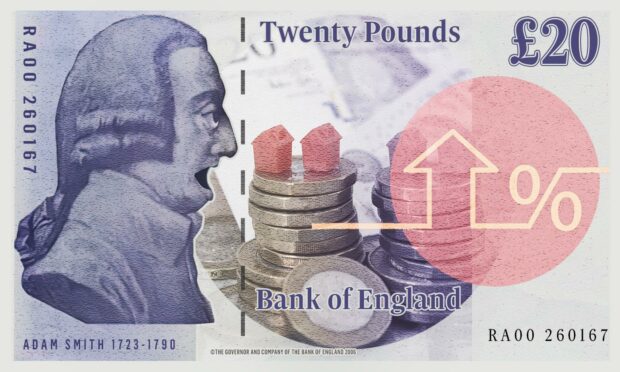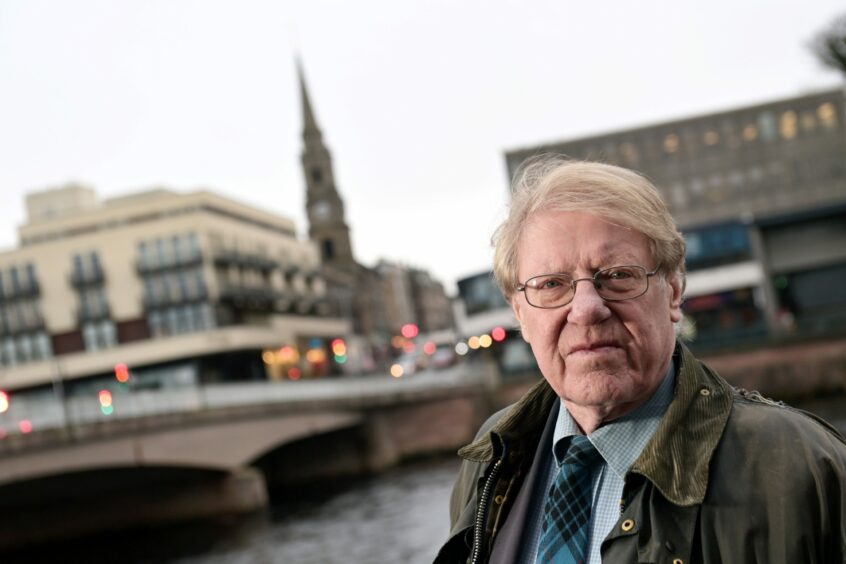The cost of borrowing is set to rise after the Bank of England (BoE) notched up the UK’s interest rate.
The new rate is now 1% – the highest it has been since 2009.
It is the fourth consecutive rise in the rate as the UK’s central bank battles to cool rocketing inflation.
The rise was widely predicted and follows other countries which have done the same recently – yesterday, the US Federal Reserve Bank increased their benchmark policy rate by half a percent for the first time since 2000.
Inverness-based economist Tony Mackay said the BoE’s main objective is to reduce inflation which is at the highest level in 30 years, sparking fears of a cost of living crisis across the UK.
Unusual circumstances
“The bank hopes the increase will reduce consumer spending and bring down the inflation rate,” he said.
“However, the current situation is very unusual because of the impact of the coronavirus pandemics and also the ongoing war in Ukraine, which have forced up energy and other prices.
“Shortages of gas and many other products are the main reasons for the high inflation rate, not consumer demand.”
However, an increase in the bank rate leads to commercial lenders also passing their costs onto borrowers.
“Commercial interest rates are much higher than that of the Bank of England, of course, but they are directly linked and will also rise,” he said.
He predicted “mixed impacts” across the north and north-east, with rural communities in Highlands set to suffer most as costs continue to rise.
“Average pay rates in Aberdeen and Aberdeenshire are currently about 6% higher than the Scottish average, so local residents should be able to manage better,” he said.
“In contrast, average pay rates in the Highlands are about 5% below the national average, and in Lochaber, Skye and Lochalsh -10% lower.
“Consumer prices in the rural areas are also usually significantly higher than in the cities, so I expect residents in these areas to be much worse affected.”
He added he has “no doubt ” that inflation will continue to be high for the next few months but added: “However, the average CPI forecast for 2023 is just +2.4%, so things should be much better next year.”
Still low… so far
The BoE’s monetary policy committee (MPC) of nine members voted six to three in favour of increasing interest rates to 1% from 0.75%.
Paul Johnson, director of the Institute for Fiscal Studies (IFS), warned of the impact on people’s mortgages.
“We are still at historically staggeringly low levels of interest rates,” he told Radio 4’s Today programme.
“So you look at it that way and think one quarter of a percent, half a percent, still a very low level, that doesn’t look very dramatic.
“On the other hand, of course, if you’ve got a mortgage and it goes up by half a percent or 1% proportionally that’s a very big increase.
“That could be doubling your mortgage interest payments over a period of time, so even small changes now, at least down the line once people’s certain fixed rates run through, could have really big effects on people who have got significant mortgages.”
Most homeowners who are on a fixed rate mortage won’t be immmediated affected unless they need to remortgage their property.
Others who are on a variable, tracker, or standard variable rate could see their payments rise further.
Small businesses fear
Peter Gallanagh, chief executive for Scotland and the North at accountancy firm Azets, said that the SME community will be disproportionately impacted by the increase in interest rates.
“The interest rate rise, whilst still historically low, will place additional repayment burdens on borrowers and in turn impact on SMEs as spending starts to be curtailed.
“With more than 300,000 SMEs in Scotland any further interest rate rises will have a significant effect on the economy, employment and tax receipts.”

